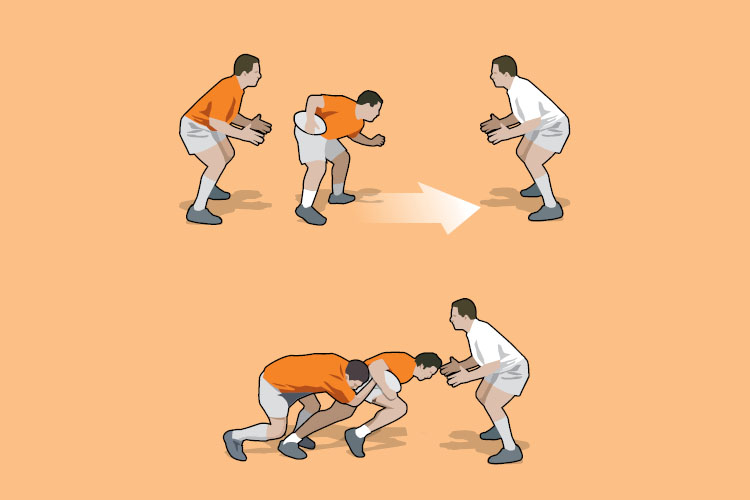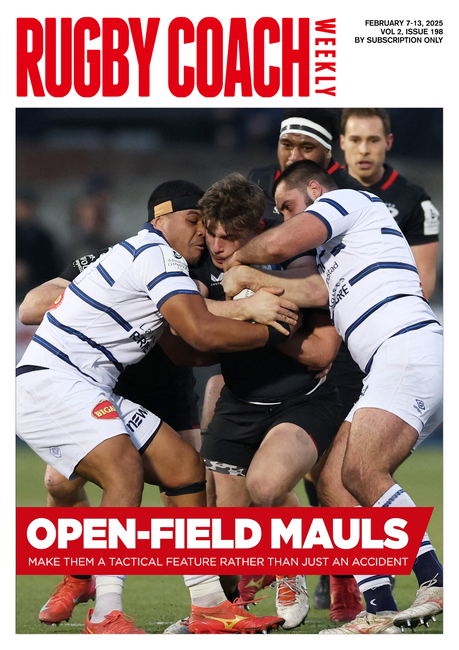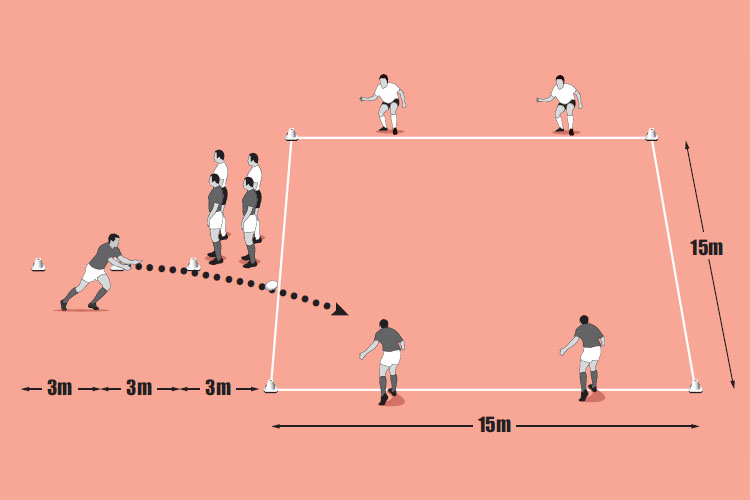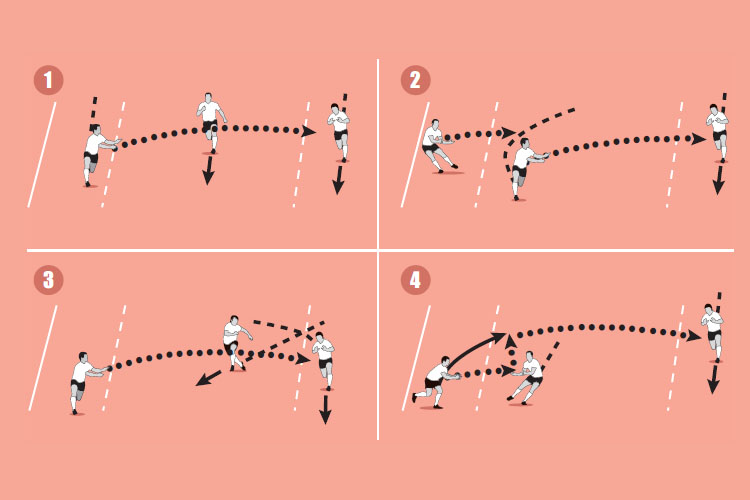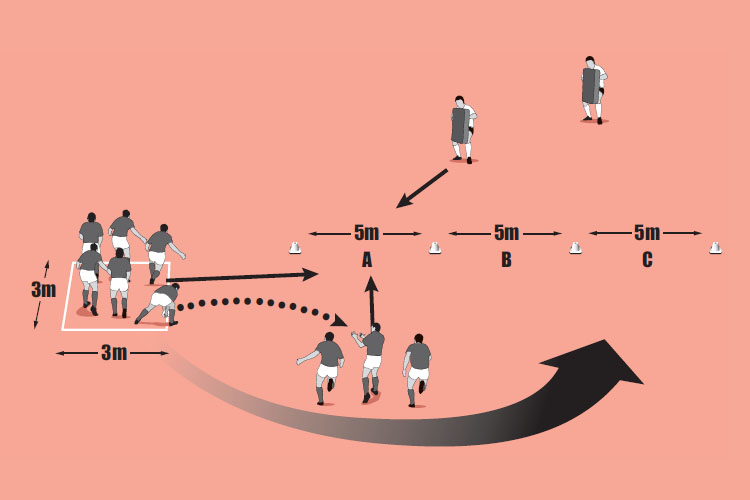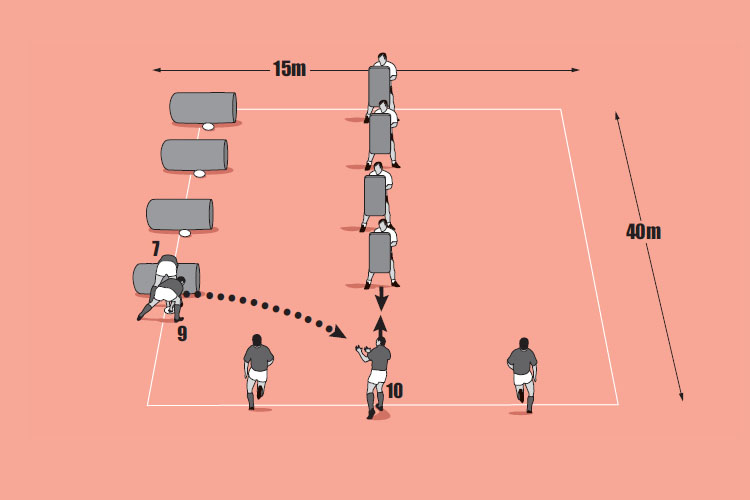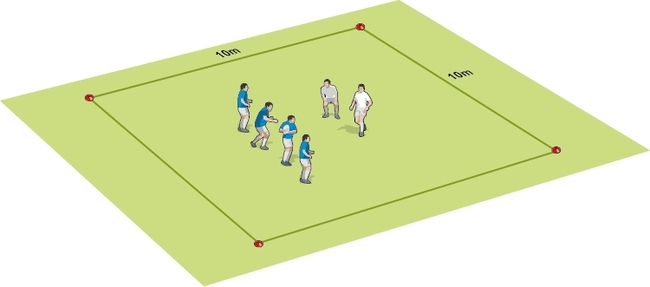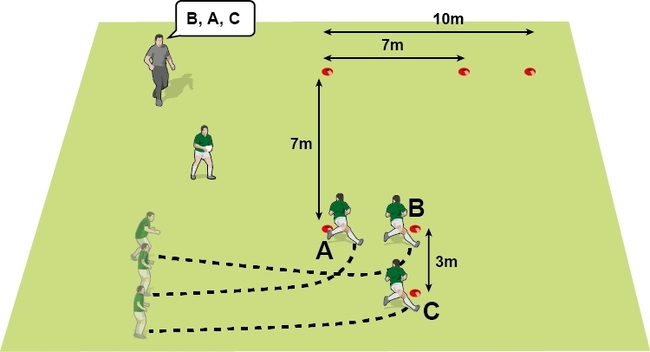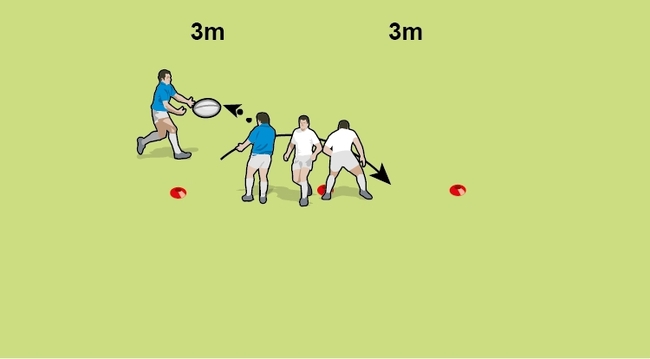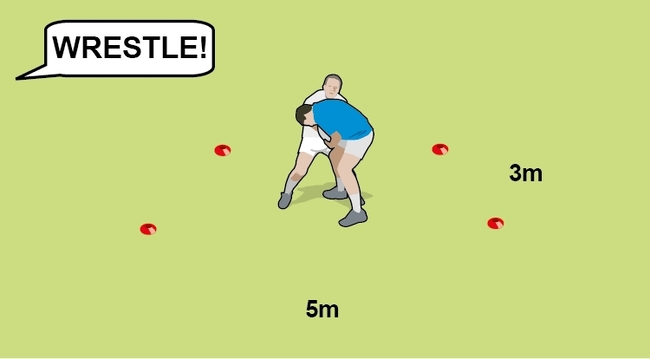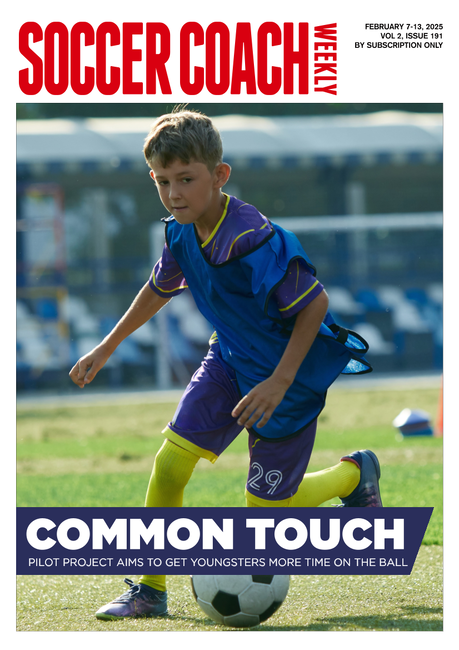Shotgun rugby
A support player can “ride shotgun” on the ball carrier going into contact. In this 2 v 1 session make two players bind to drive the ball into one defender. The outcome should be go forward ball. If the ball carrier falls over, the other attacker can grab the ball or protect the tackled player. It should lead to fast ball.
Warm up time: 5
Session time: 5-8
Development time: 6-9
Game time: 15-20
Warm down time: 7
What to think about
This session uses a concept known as “latching”. A support player latches on to the ball carrier and drives him through the contact area. This might unbalance the ball carrier unless he meets contact. If that contact falls over, the ball carrier might fall too. Then, depending on whether the latching player has a hand on the ball, he has to work out whether to grab the ball or simply protect the fallen player. Don’t let the supporting player become too hung up on holding the ball when contact is made though.set-up
- Ball carrier: drive into contact in the normal way with a strong body position and ball away from contact.
- Support player: drive in on the hip or backside of the ball carrier. When the ball carrier falls, grab the ball or protect it.
What you get your players to do
Put a ball carrier about a metre away from a defender (who may hold a ruck pad). Put another player about an arm’s distance behind the ball carrier. The players move forward into contact, with the player behind binding on to and driving the ball carrier forward. The ball carrier should eventually fall to ground. The support player grabs or protects the ball on the ground. Develop by changing the starting distances between the players.Development
Stand one defender in the middle of the channel, with a second defender at one end and behind the first. Three attackers move into the first area of the channel, as shown, with the ball carrier driving into the defender. The ball can only change hands once the ball carrier goes to ground. If the ball is recycled cleanly, the attackers move forward into the second half of the channel, with both defenders moving forward to repeat the same exercise.Related Files
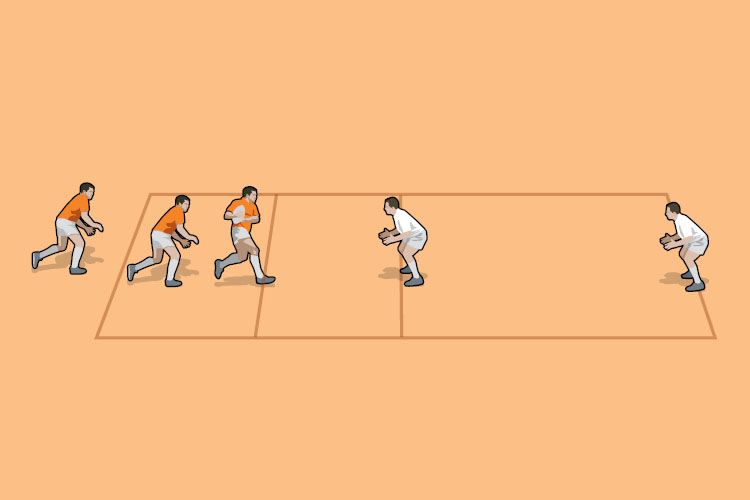
Game situation
Four attackers play six defenders. The defenders are only allowed to put two players into each tackle situation. Start the attackers 2m from the half way line. Play for two minutes. After any infringements or a try being scored, restart in the middle again.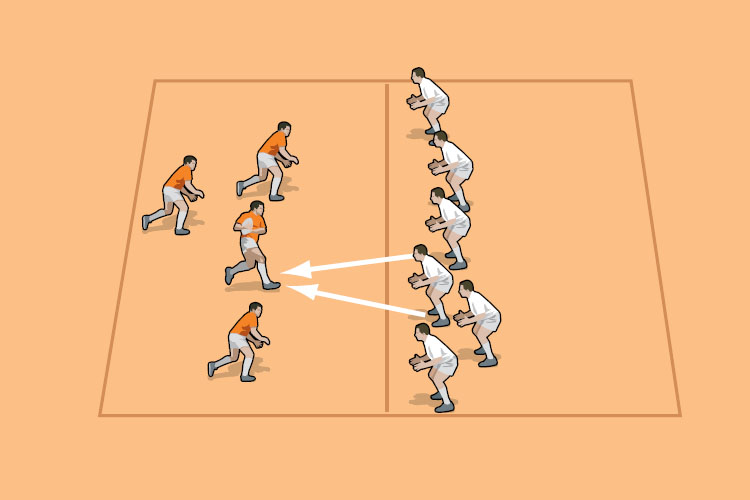
What to call out
- “Keep the ball away from contact”
- “Be balanced in contact, and use the extra weight to drive forward”
- “Support player: communicate you are there”
Newsletter Sign Up
Coaches Testimonials

Gerald Kearney, Downtown Las Vegas Soccer Club

Paul Butler, Florida, USA

Rick Shields, Springboro, USA

Tony Green, Pierrefonds Titans, Quebec, Canada
Subscribe Today
Be a more effective, more successful rugby coach
In a recent survey 89% of subscribers said Rugby Coach Weekly makes them more confident, 91% said Rugby Coach Weekly makes them a more effective coach and 93% said Rugby Coach Weekly makes them more inspired.
Get Weekly Inspiration
All the latest techniques and approaches
Rugby Coach Weekly offers proven and easy to use rugby drills, coaching sessions, practice plans, small-sided games, warm-ups, training tips and advice.
We've been at the cutting edge of rugby coaching since we launched in 2005, creating resources for the grassroots youth coach, following best practice from around the world and insights from the professional game.
